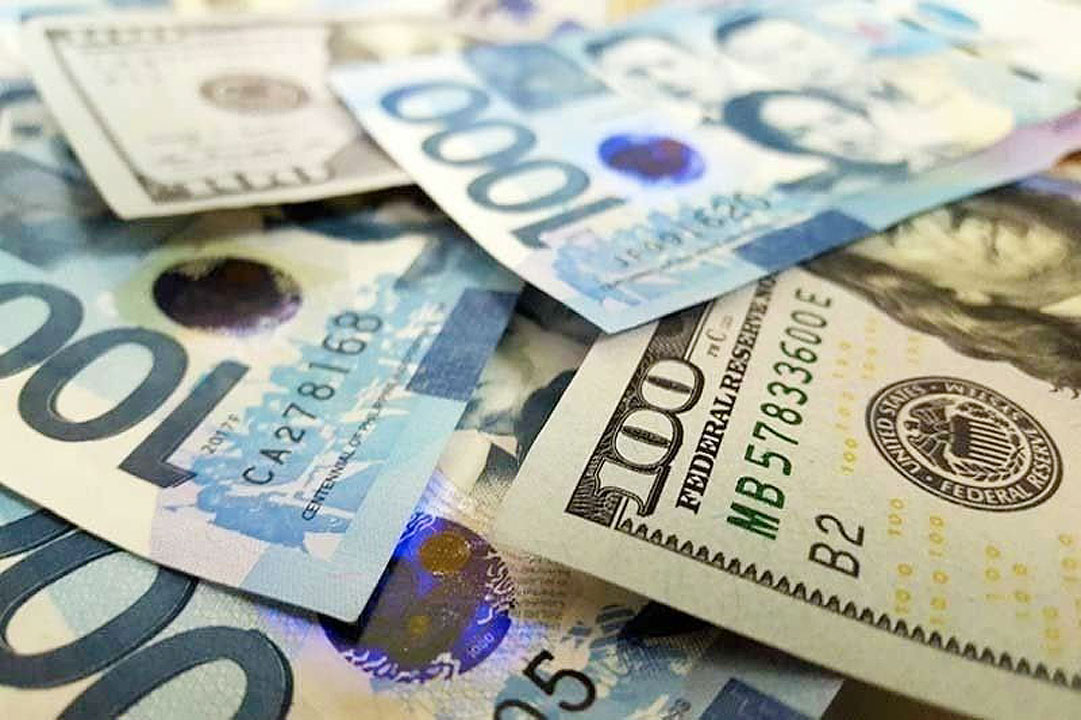Peso weakens anew vs dollar

THE PESO dropped anew against the dollar on Thursday due to weak China manufacturing data.
The local currency closed at P56.26 versus the dollar on Thursday, weakening by 11 centavos from Wednesday’s P56.15 finish, data from the Bankers Association of the Philippines’ website showed.
The local unit opened Thursday’s session at P56.23 per dollar. Its intraday best was at P56.155, while its worst showing for the day was at P56.31 against the greenback.
Dollars traded dropped to $990.35 million on Thursday from the $1.065 billion recorded on Wednesday.
The peso was dragged down by a stronger dollar following China factory output data, Rizal Commercial Banking Corp. Chief Economist Michael L. Ricafort noted in a Viber message.
“The peso weakened from safe-haven demand after the downbeat Chinese manufacturing PMI (purchasing managers’ index) renewed global growth concerns,” a trader likewise said in an e-mail.
The dollar index, which measures the currency against a basket of six peers, rose 0.22% to 104.38 and was off a two-month high of 104.7 touched on Wednesday as traders pared back their expectations of another US Federal Reserve rate hike this month.
The Chinese offshore yuan last bought 7.1320 per dollar, after touching a six-month low in early London trading after briefly gaining some support after China’s factory activity unexpectedly grew in May from a decline in April.
China’s official manufacturing PMI fell to a five-month low of 48.8, the National Bureau of Statistics said on Wednesday, down from 49.2 in April and below the 50-point mark that separates expansion from contraction.
For Friday, the trader said the peso could depreciate further due to potentially strong US labor data.
The trader sees the peso moving between P56.10 and P56.35 per dollar, while Mr. Ricafort sees it trading from P56.15 to P56.35.
PESO WEAKNESS TO PERSIST
Meanwhile, the peso’s weak run since April could continue this month as it enters a period of seasonal underperformance against the dollar, ANZ Research said.
The local currency has a “strong tendency” to weaken against the dollar in June, a note written by ANZ Research Foreign Exchange Analyst Kausani Basak, Economist Debalika Sarkar and Head of Asia Research Khoon Goh said.
“Looking at historical trends since 2000, over the last 23 years, the peso has weakened against the dollar on 18 occasions during the month of June. The average spot decline was 0.9%, and in the years when the seasonal pattern occurred, the average decline was 1.6%,” ANZ Research said.
From April until end-May, the peso traded at around P54 to P56 per dollar. In May alone, the peso depreciated by 77 centavos or 1.37% to P56.15 from its April 28 close of P55.38.
“The June weakness is statistically significant, though the exact cause is not clear. We could not find any distinct pattern in the trade balance or remittances flows data that can explain the peso’s June swoon,” ANZ Research said.
The peso could also face a stronger dollar in the near term as markets expect another rate hike from the Fed in their June 13-14 meeting.
“Progress on bringing US inflation back towards target is too slow for some Fed officials, and the US economy remains resilient with the labor market staying very tight,” ANZ Research said.
“The regional banking stresses have eased, and now that the debt ceiling uncertainty is out of the way, markets are pricing in more than an even chance of another 25-bp (basis point) rate hike at the June meeting,” it said.
“This sets the peso up for a very challenging month, which could see it slide towards P57 in June,” it added.
The Fed has raised borrowing costs by 500 bps since March last year, with its target rate now at 5-5.25%.
“Looking past the near-term peso weakness, we expect the currency’s prospects to improve over the second half of the year. then, we expect the Fed’s tightening cycle to have drawn to a close, which will reduce support for the dollar,” ANZ Research said. — AMCS and KBT with Reuters
